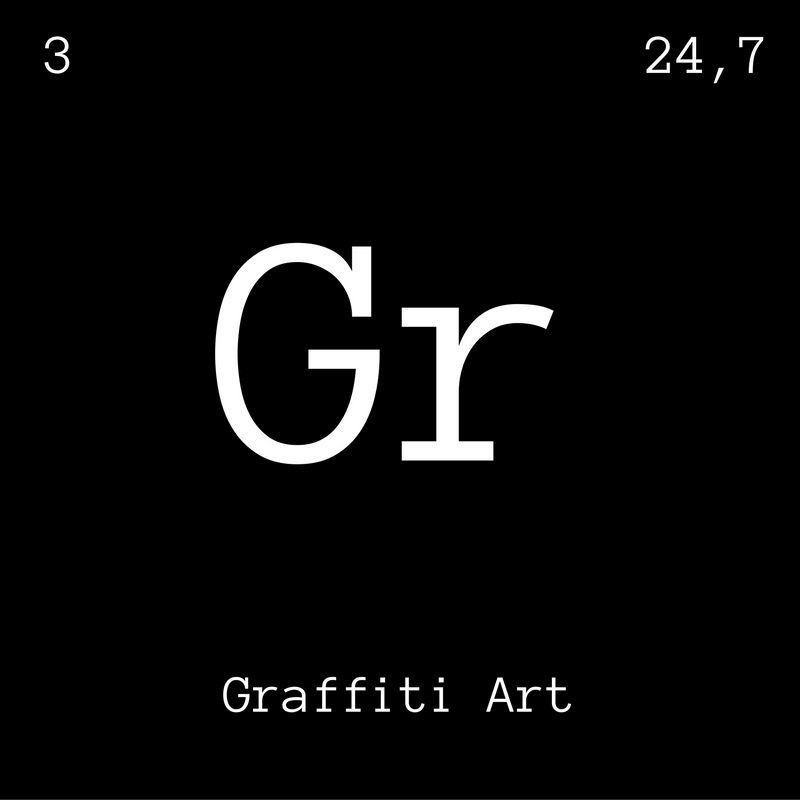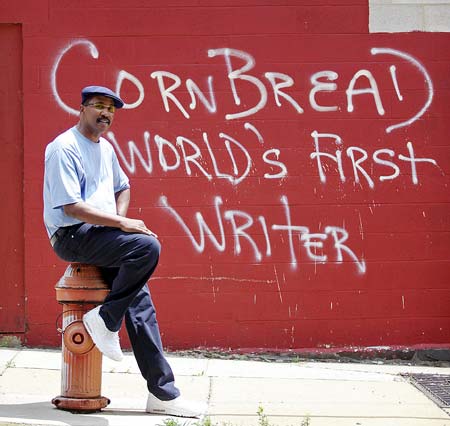
The rise of graffiti art from train cars and alley walls to museums and canvases is not only important to art but to Hip Hop as well. Since its start in the late 1960’s, graffiti art’s unusual presentation and bold style kept it labeled as vandalism. Mainstream artistic recognition would not come until a few decades later, and graffiti art, like much of Hip Hop, came from humble origins.
Unlike the majority of Hip Hop culture, which stems from New York, graffiti art came from Philadelphia’s streets, walls, and overpasses. As early as 1965, before DJ Kool Herc at Sedgwick Avenue, the name CORNBREAD could be seen around Philly’s subways. Graffiti artist and activist Steve “Espo” Powers claims that CORNBREAD started tagging to garner attention from a young girl named Cynthia. A few years later a young tagger known as TOP CAT moved to Harlem after some mentorship from CORNBREAD himself. The spread of modern graffiti art to New York allowed the art form to take off, not only as aesthetic pieces but also as a way for the nameless to physically leave behind their mark and legacy on the city that fostered their creativity.
Suddenly, the name JULIO 204 popped up followed by TAKI 183, EVIL ED, JUNIOR 161, CAY 161, and EVA 62. Many writers combined a street name or favorite area with a name or nickname into a unique moniker that let them escape invisibility and become something greater. The movement had begun, and there was no slowing it down. Taggers, or writers as they called themselves, forged an expressionistic freedom that transcended the notion of borders or convention. Eventually, even DJ Kool Herc himself got involved under the name CLYDE AS KOOL in the summer of 1970. This marked the genesis of Clive Campbell becoming Kool Herc, as Hercules was his nickname in High School.
https://www.youtube.com/watch?v=0EW22LzSaJA
Into the 70’s began the Style Wars (there is a Documentary I highly recommend called Style Wars); writers began to organize and collaborate in new ways. Congregating at “writer’s benches” to receive critiques on planned work in notebooks, more experienced writers began taking on apprentices and utilizing teams to efficiently complete larger or more complex pieces.
One of the unique things about graffiti art as an element of Hip Hop is the inclusivism that persists today. The competitive nature didn’t result in beef the way it did among emcees nearly to the same degree. Diversity in both ethnicity and perspective characterized the various crews and members of the overall tagging community. Skill remains the most essential key to success and recognition; it didn’t necessarily matter where you came from as much as what you brought to the bench.

Fab 5 Freddy, Debbie Harry, and Lee Quinones, handball court at Pike and Cherry, 1980
An art dealer named Claudio Bruni granted two graffiti artists, Fab 5 Freddy and Lee Quinones, the opportunity to showcase their art in a gallery opening in Rome in the late 70’s. This marked the beginning of a new era, acceptance of graffiti/street art by the mainstream art community. Today many museums feature graffiti art including the Graffiti and Street Art Museum in Houston, Brooklyn Museum, and Street Art Museum in Amsterdam.
Distinct differences between the art that adorn New York’s subway and the pieces filling exhibits around the world are plain to see. However, public acceptance and encouragement pave the way for future writers to make their mark on the world further shaping it and Hip Hop culture in their image.

